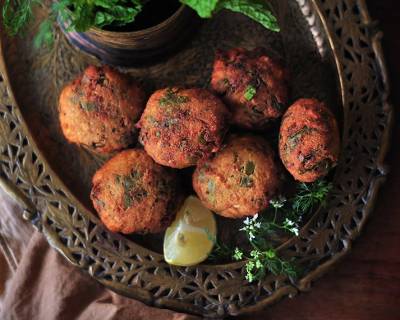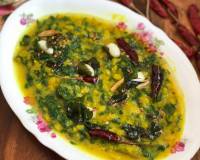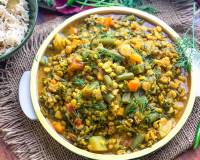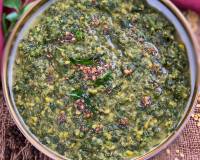Dried beans, lentils, and peas – more commonly known as beans and dal – are widely used in Indian, Middle Eastern, and Mediterranean cuisine. Lentils and dry beans are the product of pulses which have two cotyledons (can be split into two). Various delicious sweet and savory recipes including appetizers, main course, and even desserts are prepared with dals and beans. Especially dals are next only to their staple food – rice and wheat – to the Indian, Pakistani and Middle Eastern cuisine.
One can see the Indian and Pakistani kitchens stocked up on a variety of dals and beans and they are used almost every day for preparation of food. Recipes with pulses-beans and lentils include overnight soaking, or roasting before they are cooked. Sprouted dals and peas are used in different recipes as well, or they are eaten as salads, mixed with other veggies and greens.
What are Pulses?
Lentils and dry beans are the product of pulses which have two cotyledons (can be split into two). Pulses come from leguminous plants which fix nitrogen available in the atmosphere and naturally reduce the need of artificial fertilizers for yield and are hardy crops that can grow in water-limited areas as well.
What do the Lentils and Beans have?
Proteins:
Proteins are essential building elements of our body and are great for our muscles and normal growth and body maintenance. Pulses-lentils and beans are one of the best sources of vegan protein that have up to 36 percent protein in dried beans and 22 percent of it in cooked beans.
Carbohydrates:
Carbohydrates are the immediate energy givers to our body and fibre helps bind toxins and cholesterol and eases gut to keep the food moving in digestive system. Pulses-lentils and beans are a great source of carbohydrates and fibre and hence are a best source of energy since they combine good protein within them. Lentils and beans are low in fat and glycaemic index (helps in slow digestion and need not worry about high carbs), have no gluten or cholesterol and have good amount of folate, iron and potassium.
Micronutrients:
Micronutrients are the minerals and vitamins needed by body in small quantities but have specific function for normal health, growth and body maintenance. Among the micronutrients, pulses are a rich source of iron, folate, copper, potassium, manganese and zinc and regular intake of pulses can keep their deficiency syndromes at bay.
Anti-nutrients:
Anti-nutrients cork up the absorption of micronutrients. Soaking in water or soda water to soften the dals and beans are most common procedure and a part of cooking them. Researches have proved soaking is also beneficial since anti-nutritional compounds in pulses which inhibit micronutrient absorption is washed away from pulses in the process. Hence, make a note to discard the water used to soak pulses everytime. Soaked pulses also have active beneficial enzymes for improving metabolism and boiling them decreases the potential of causing flatulence (bloating).
Recipes prepared with lentils and beans are best when had with grains like rice, wheat or any millet. Traditionally, dals and beans are had with rice, chapati or any Indian Breads. Proteins in pulses compliment the specific proteins in grains. These are the best combinations to achieve balanced vegetarian diet through right amount of carbs and these protein store-houses to provide energy while the protein demand is met. FAO has crowned year 2016 as International Year of Pulses. Let us be aware of the benefits that this vegan source of protein can have and spread the word to increase its usage through these handpicked recipes.























